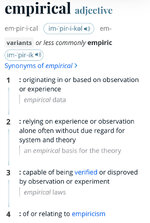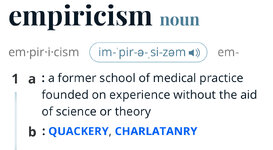HandgunHTR
WKR
- Joined
- Jan 27, 2022
- Messages
- 2,031
Jumping in a little late to this latest spat, but wanted to highlight what @Harvey_NW and @JackButler eluded to above.
The information posted in those threads is, in fact, empirical.
The definition of empirical: based on, concerned with, or verifiable by observation or experience rather than theory or pure logic.
Now, if by empirical you mean "peer-reviewed scientific" that is different. If that is the case, then I would point you to 1) the fact that you will be hard pressed to find that for any of the larger cartridges either and 2) there have been multiple studies that prove that "average" people shoot lighter recoiling rifles better than heavier recoiling rifles. Combine that with the undeniable fact that hits in the vitals kill animals, being able to hit the vitals is the most important variable when it comes to hunting. Period.
The information posted in those threads is, in fact, empirical.
The definition of empirical: based on, concerned with, or verifiable by observation or experience rather than theory or pure logic.
Now, if by empirical you mean "peer-reviewed scientific" that is different. If that is the case, then I would point you to 1) the fact that you will be hard pressed to find that for any of the larger cartridges either and 2) there have been multiple studies that prove that "average" people shoot lighter recoiling rifles better than heavier recoiling rifles. Combine that with the undeniable fact that hits in the vitals kill animals, being able to hit the vitals is the most important variable when it comes to hunting. Period.



